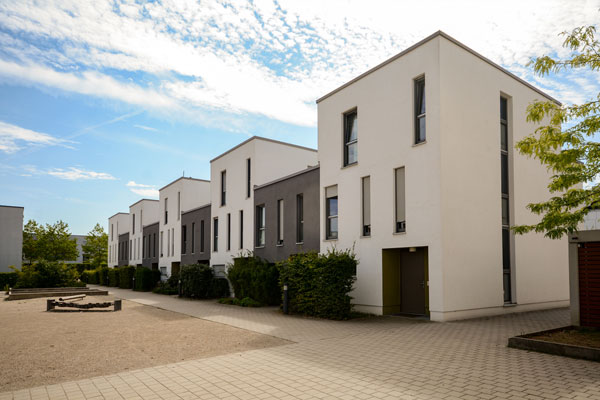Flat Roof Installation: The New Residential Trend for 2020
Author: Heidi J. Ellsworth | May 26, 2020
Along with other trends like green roofs and solar panels, roofing contractors are seeing an increased interest in flat roof installation for residential buildings. Homeowners and building owners are looking for usable roof space to make an environmental impact, revamp a building's appearance or potentially save them money.

Here are a few reasons why contractors should encourage some residential customers to consider flat roof installation for new construction or remodeling projects.
Advantages and Disadvantages for Homeowners
Buildings with flat roofs are a strong architectural trend that offers a sleeker, more modern look. While a steep slope roof covered in shingles or other materials can be attractive, it tends to cost more than a flat roof. This opportunity to save gives homeowners more financial flexibility to play with features like rooftop decks, green roofs and solar panels. If a building has the structural integrity to support the weight of soil and plants, a rooftop garden can be a great addition. Green roofs help cool a building's interior, reduce runoff and attract wildlife.
Two significant drawbacks to residential flat roofing are that it likely won't last as long as a steep slope roof in harsh wintry climates, and may need more frequent inspections and maintenance. Factors such as the weather, foot traffic, maintenance and installation quality affect how long a flat roof lasts. A roofing company installing a flat roof must also account for proper drainage and pitch to avoid ponding and leaks.
Choosing a Material
Homeowners can choose from many types of roofing products and systems for a strong flat roof. One economical and durable choice is a single-ply membrane. Materials like polyvinyl chloride (PVC), ethylene propelene diene terpolymer (EPDM) and thermoplastic polyolefin (TPO) each have their own advantages and disadvantages. PVC's heat-welded seams make it highly resistant to water, while TPO resists algae and mold. EPDM remains flexible even in changing temperatures, and won't easily crack or split.
Whether self-adhered or installed using a torch-down application, modified bitumen roofs can provide a variety of colors and solar reflectivity options. However, installation can be more challenging for contractors. Installing torch-down modified bitumen requires your crew to have the right fire prevention equipment and safety training. Using an open flame may also require special work permits. Peel-and-stick options reduce the fumes, fire and risks for contractors, but may be trickier to install in cold weather.
Many flat roofs today are restored with coatings or coated during new construction, which offer an extra level of protection and waterproofing. Coatings are economical and easy to install, and also come in white cool roofing options.
If your residential customer's home is suited for a flat roof replacement, share with the homeowners how a durable, watertight membrane or bitumen roof can help them with sustainability and long-term maintenance. If your roofing company already has a strong track record of quality flat roof installation, show them some examples of past projects. Whether growing a rooftop garden or hoping to stay within budget, homeowners will be intrigued to see flat roofing as an option.